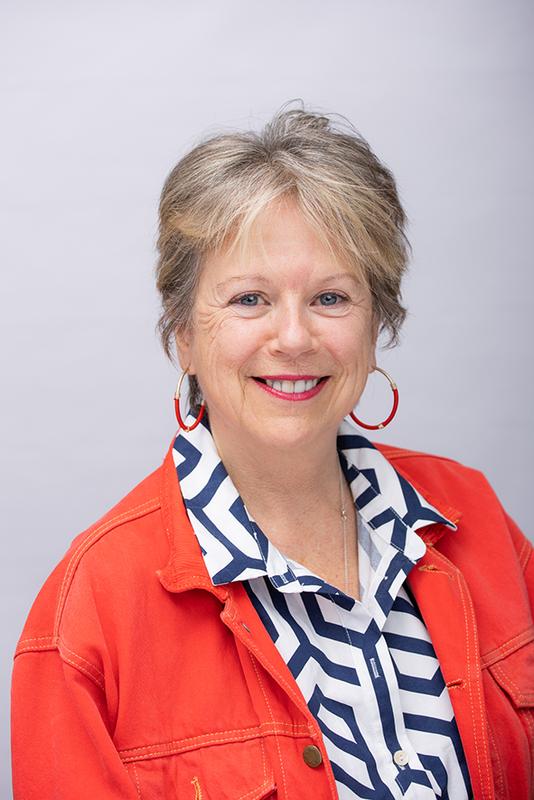7
Imparting wisdom: journalists teaching journalism
Imparting wisdom
“I managed to pull a rabbit out of a hat,” Pam Walker explains, sitting up in her chair. She is recounting the time she chased down a lead that won her a Fairfax Best News Story award in 1998, the first of four during her career. “I’ve probably mentioned it in class,” she says. I do, in fact, recall the yarn. I heard it in a 2019 tutorial as one of her MECO6900: News Writing students. Not content to hand in the same copy as every other reporter who attended the press conference announcing contracts for the Howard government’s Job Services privatisation, Walker followed up on the rumour that a multimillion dollar deal was given to somebody with no office or staff. She asked for contact details and, to her surprise, received them. She asked for interviews and, again, received them. Nearing her deadline, Walker found the man and discovered he was simply farming the contract back out and adding his 10 percent cut. The man agreed to do an interview and have his photo taken. The next day, “the member of Parliament, Janice Crosio, walked in [to the Lower House] waving our paper,” she recalls. “The entire day in Parliament was on that story.” The controversy dominated the news cycle for over a week, and the contract was later reassigned.
Walker uses the experience as an example to push students past their comfort zone to find the best possible story. “I teach students to put their neck out a little bit, to take risks, not to be afraid of people saying no, not to be afraid of rejection, and to make sure they have a plan B so that if plan A doesn’t work, they can go to something else.”
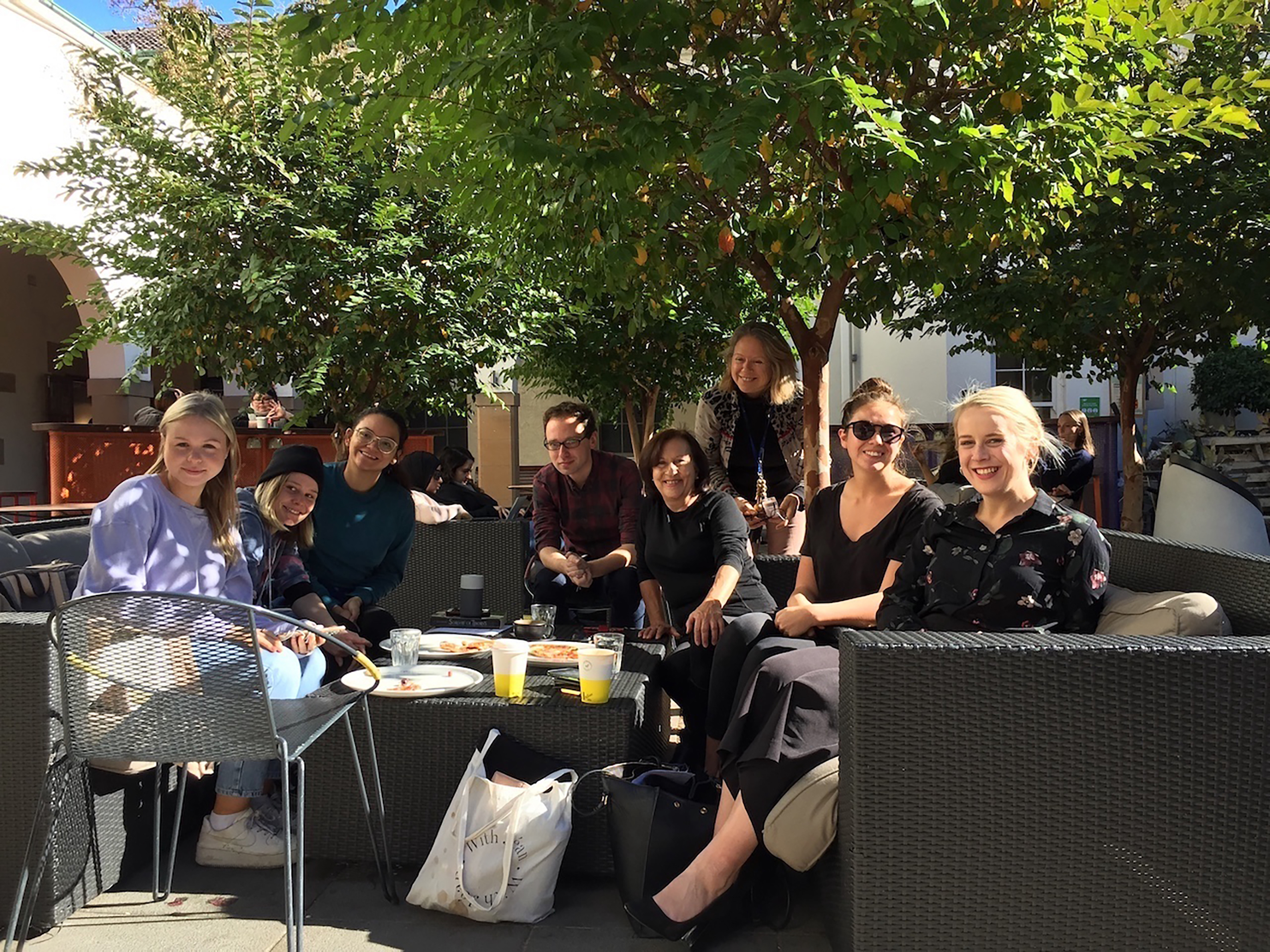
Figure 7.1 Bunty Avieson and Pam Walker with the students participating in the first MECO Newsroom, 2019, photo courtesy of Pam Walker
MECO’s success in teaching future journalists can be attributed in part to the passion that Walker and her colleagues share. For staff with a collective wealth of experience in television, radio, podcasting, newspapers and magazines, stories like Walker’s are an inevitable and appreciated part of the classroom experience, alongside theory and practical exercises.
“You know, one of the most fantastic things about working in the media is that you do get this front-row seat to what’s really going on in a country,” Bunty Avieson tells me. Avieson is a MECO journalism lecturer who worked in Bhutan, funded by the United Nations, from 2008 to 2009. She consulted for the Bhutan Observer newspaper, which had recently launched, and Reporters Without Borders. It’s this, watching first-hand the building of a new democracy, that she considers her most rewarding experience as a media professional.
When I ask the other lecturers about rewarding professional experiences, their faces light up. “One of my greatest treasures is meeting Sir David Attenborough,” Alison Ray, a broadcast journalism lecturer, tells me. She filmed a TV segment with the famed British broadcaster and recalls, “Everybody was walking around with a smile on their face that day.” She continues with a highlight reel of her 30-year career as a television, video and radio journalist: doing a news bulletin while trapped in an elevator with Chris Isaak; watching Dave Grohl ride a Razor scooter around the ABC foyer; working on a documentary with two-time Academy Award winner Sir Peter Ustinov; and interviewing Bob Hope, Julie Andrews and Sir David Lean. Playful name dropping and digressions have been part of Ray’s units since she joined MECO in 2010.
Lea Redfern, the department’s audio and podcasting lecturer, counts two award-winning documentaries among her career standouts. The first, titled A Place You Cannot Imagine, details the experience of refugees sent to immigration detention centres in the Australian desert. It won the 2003 Human Rights Radio Award from the Australian Human Rights Commission. The other is called Almost Flamboyant and won the inaugural Sarah Award for radio drama in New York in 2016. Redfern grins widely as she tells me it is about a “talking taxidermied flamingo”. But it’s not always about the accolades. Redfern also tells me how rewarding it was to work with ordinary people to crowd-source stories in the latter part of her 20-year ABC career.
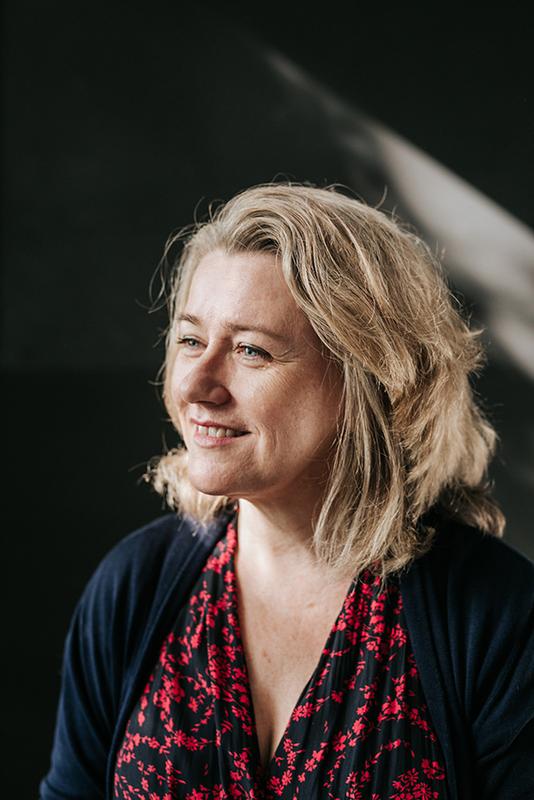
Figure 7.3 Lea Redfern, 2019, photo by Sister Scout
Prior to these career-defining experiences, and long before these stories would be recounted to budding journalism students in a classroom, the educators had to crack their way into the industry. Redfern began at the ABC with a traineeship, which she admits must seem foreign to today’s journalism students. The cross-media program trained university graduates in television, multimedia and radio. “My joke was that a lot of people who were starting were lying [because they said] they were interested in radio when they really just wanted to get on television,” she recounts. “But I was the opposite, all I wanted to do was radio.”
When Ray began working at the ABC in 1978, she was both the only female and the first University of Technology Sydney graduate to be accepted into a cadetship at the public broadcaster. After a year of training, she made her way through Channel Nine, Channel Ten and SBS, before heading to England and Granada Television where her one-day contract became a news editor position in just nine months. This was largely due to her work on the Manchester air disaster in August 1985, which left 55 people dead. “I got to work at 7:00 am and at 7:13 am, all the police scanners, everything went dead quiet for 15 seconds. I was in the newsroom, and then all hell broke loose,” she says. “What was it like? Horrific, chaotic. Just absolutely horrific.”
Working on the UK’s Sunday Express the day of the Zeebrugge ferry disaster in March 1987, which left 193 passengers dead, was a similarly trying experience for Avieson. “Just shocking,” she says. It was a far cry from her first journalism job at a Melbourne suburban newspaper, the Mordialloc News. She laughs, remembering the first professional story she wrote at the age of 19 about a 10-year-old boy who built a brick fence taller than himself for his mother. “I think I thought it was really important,” she says. “I worked really, really hard on that story.”
For Walker, it came down to one important thing. “I always wanted to be a journalist,” she says. “I discovered a passion. So, I did it.” She got a foot in the door with a two-day fill-in position at the Fairfield Champion and remained in the industry for the next two decades, thanks to her tenacious work ethic and love for the field.
Like their different introductions into the field of journalism, all four found distinct pathways into university teaching. Avieson’s time in Bhutan contributed to a book and a PhD, leading her into full-time academia. By 2010, tired of 4 am radio and 6 am television starts, Ray, who was running her own business, went looking for an extra day of work a week. Instead, successfully answering an online ad, she was given “open slather” to create a MECO curriculum directly informed by her storied career. After balancing different editor jobs with part-time teaching at the University of Western Sydney, the University of Technology Sydney, the University of New South Wales and the University of Sydney, Walker started full-time teaching in 2018. Leaving the ABC, Redfern came to the University of Sydney in 2017 to teach undergraduate podcasting, an evolving curriculum she immediately updated.
After decades of practical experience, these seasoned media professionals are now tasked with teaching aspiring journalists and crafting curriculums, working alongside colleagues with a range of professional backgrounds and academic skill sets.
After joining the department in 2005, Megan Le Masurier directed the Master of Publishing and coordinated MECO3606: Media Production: Advanced Media Writing. Before that, she worked as a journalist and editor in the Australian magazine industry for two decades, including stints as deputy editor for ELLE Australia and editor for Countdown. Le Masurier’s PhD on Cleo magazine, supervised by Catharine Lumby, strengthened feminist media studies in the discipline. Moreover, Le Masurier was one of the international pioneers of slow media studies, a new form of research which has sought to challenge the news media’s fascination with speed by returning to issues of memory and the “recovery of attention”.
As Steven Maras recounts, Le Masurier was an incredibly patient and generous editor and interlocutor for MECO students, introducing them to different styles of writing. At a time when student consultations were infrequent, Megan always had a queue of students lined up outside her office door. Her ethics of care for students was exemplified in the work she voluntarily undertook to provide them with clear guidelines on academic integrity and avoiding plagiarism. She was central to the success of magazine studies in the Master of Publishing and in the teaching of Adobe InDesign to postgraduate students. Together with Fiona Giles, she also championed feature journalism in the department and nurtured entire cohorts of students to find their voices. She was especially influential on the students who did international internships and those who were up to the challenge of sourcing stories with a fresh angle.
Journalist, author and educator Benedetta Brevini’s current teaching is in the political economy of communication and technology, and in communication and the environment. Joining MECO in 2013, she still collaborates with and contributes to outlets including South China Morning Post, The Conversation, The Guardian and openDemocracy.
Fiona Martin’s media career began in 1987, working for stations like 2SER, 2WEB, ABC Radio National and ABC Radio Sydney, first on news and features, and later news talk and documentary. An award-winning feature maker, she produced the ABC’s first regional cross-platform documentary and ground-breaking programs on women online. Joining MECO in 2008 after a decade at Southern Cross University, Martin has overseen the digital transformation of MECO’s journalism teaching. She created the department’s postgraduate MECO6925: Online Journalism unit and taught digital feature production to undergraduates in MECO3602: Online Media. She introduced the department’s first ongoing blogs: Salience, the journalism showcase, and Parallax, documenting MECO’s overseas journalism fellowships. She now teaches the final year industry innovation research unit.
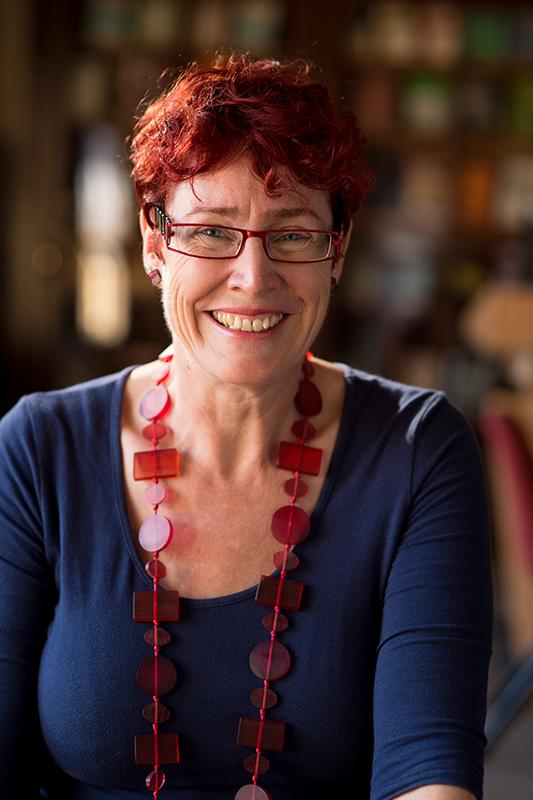
Figure 7.4 Fiona Martin, 2012, photo courtesy of the University of Sydney
Penny O’Donnell drew on extensive academic and professional media experience in Latin America when she revitalised MECO6926: International Media Practice. Her students say studying global media breaks down stereotypes, broadens their worldview and teaches them diverse ways of creating media and news narratives. Additionally, O’Donnell has worked with colleagues on several Australian Research Council-funded projects and produced findings that have enabled MECO journalism students to better understand and engage with the changing contours of media and journalism work across a wide range of contexts and cultures. This has included investigations into the future of Australian newspapers and into job loss in journalism both in Australia and across the Global North–South divide.
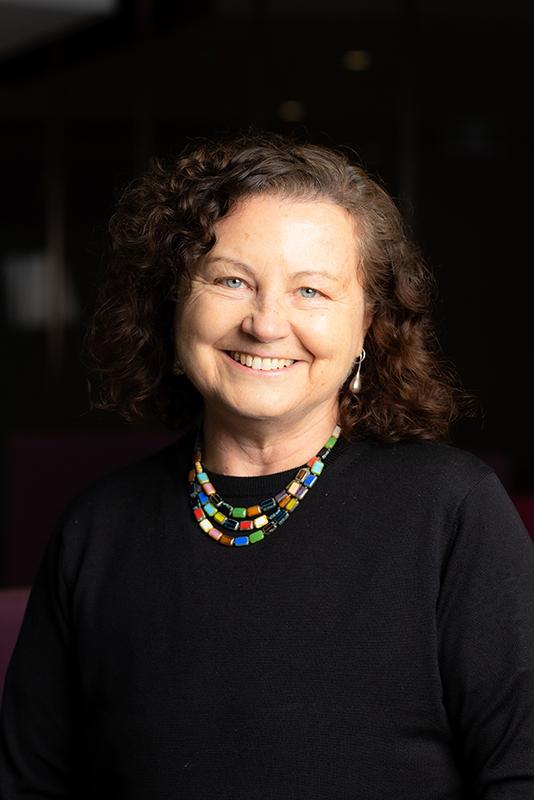
Figure 7.5 Penny O’Donnell, 2022, photo courtesy of the University of Sydney
Margaret Van Heekeren joined MECO in 2017 after nearly 20 years as a newspaper, radio and television journalist and over a decade working at Charles Sturt University. She now coordinates and lectures in first year undergraduate media units and recently developed the data journalism unit MECO2604: Telling Stories with Data. Van Heekeren also runs MECO6913: Public Opinion, Policy and Public Sphere, a postgraduate theory unit that she says, “emphasises the roundness of MECO degrees, which encourage students not just to ‘do’ but to also understand the media and communications environment”.
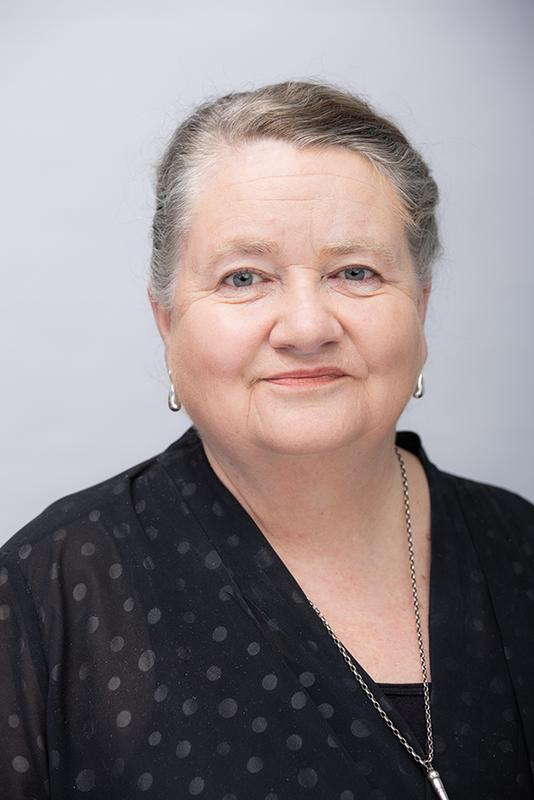
Figure 7.6 Margaret Van Heekeren, 2022, photo by Bill Green
All the educators I spoke with seem to agree with this notion that places equal value on teaching practical aspects of journalism alongside critical thinking skills – doing as well as understanding.
“I think the real-world experience helps you to know that there is always an interaction between the practical and the theoretical,” says Redfern. “You can have all the great ideas in the world, but if you don’t record it properly and it doesn’t sound good for audio, then you’re not doing yourself or the people you’re working with any favours.”
For Ray, teaching Sydney’s next television and video journalists became a calling to improve the quality of reporting and storytelling on our airwaves. “The last newsroom I worked in, I saw so much s—t passing as television news, that by the time I got to Sydney University I was determined that I would teach people how to report properly and not just come up with the dodgiest crap to fill a hole,” she says, with an unapologetic conviction I came to know well as one of her students.
Ray insists that those who report the news and influence public opinion need, foremost, to be decent and empathetic people.
According to Avieson, the department can’t only teach students how to be journalists; students also need a bigger perspective and critical understanding of the media landscape. That’s the difference, she explains, between vocational training (a J-school) and university education: learning how to write a story, conduct an interview, produce professional content and then appreciate where those skills sit within the media more broadly. “You understand what those issues are, whose voices are missing, and who’s holding power in that structure.”
Indeed, critically analysing the media landscape is a crucial part of journalism. And it is likely more important than ever in the age of fake news, social media algorithms, false equivalence and the 24-hour news cycle.
“At the beginning of each semester I say to students that this course aims to do two things: teach you how to be a creator of news, but also teach you how to be a consumer of news,” says Walker. “We have to teach critical thinking and make students aware that everything they see on social media or that they hear somewhere is not necessarily true. I make them suspicious.”
It’s clear from these conversations that the combination of theory and practice within MECO’s journalism units is motivated by a desire to send well-rounded, analytical and ethical journalists into the media workforce. “That’s what I love about it, is that we can give people skills that are really useful, but we can also give them a theoretical framework that will challenge the way they think,” says Redfern. “That is such a gift that universities give.”
These educators are just a small portion of the experienced journalists on the MECO faculty. They provided more stories on the joys of their professional careers than I could fit into this chapter. There’s an entire book’s worth of anecdotes sitting inside MECO’s John Woolley Building. Emotional highs and lows, career-defining stories and projects, and laughter thinking back on how it all started – each experience, good or bad, has had a clear and direct influence on how they teach and pass down knowledge.
“Do I miss it? I loved it while I did it,” says Avieson. “I loved the energy and knowing what goes on behind closed doors. But actually miss it day to day, not so much.”
I get the sense that transitioning into teaching was the ideal way to remain in an industry they each love, while also being in a position to impact its future. Like the story Walker tells her students about always having a backup strategy for success, each of these accomplished journalists found a way into the rewarding second phase of their careers: a plan B. Although in this case, plan B was not because plan A failed, but because it succeeded.
